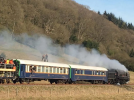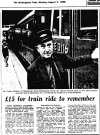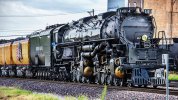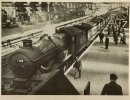After doing a little research i have unearthed the following.
330 Hall and Modified Halls were built at Swindon between 1928 and 1950.
4965 Rood Ashton Hall was built in November 1930 and withdrawn in December 1962.
Initially shedded at Plymouth, the loco went on to Penzance, Tyseley, Severn Tunnel Jnc,
Cardiff, Southall, Reading, Didcot and finally Oxford.
6998 Burton Ages Hall (a modified example), was built in January 1949 and withdrawn in 1966.
Originally shedded at Cardiff, it later went onto Shrewsbury, Tyseley, Fishguard, Old Oak Common,
Oxford then Southall, finishing up at Oxford. The same as 4965.
Now if someone can work out the number of loco's in the class times the number of years both were
in service at the same time, you might just come with a numerical possibility.
Or there again you probably won't.
To add to the confusion 4965 was believed to be sister engine 4983 Albert Hall for a number of years
which only makes matters more difficult.
HTH AnnS..







